“Simplify, then add lightness” Colin Chapman, founder, Lotus Cars
The Lotus Elan was born in an era in which genuine innovation was still possible. So while cars like the MGB and Jaguar E-Type featured a heavy ladder chassis and rot-prone bodywork, the Elan boasted an elegant glass-fibre body bolted to a tiny X-shaped steel chassis. The result was light yet stiff, prerequisites for good handling. And the Elan handled very well indeed.
The first cars weighed just 688kgs, which was little enough that the 108bhp on offer from the 1600cc engine gave performance enough for the driver to exploit that world-class handling. The Elan was a revelation and possibly the definitive two-seat sports car, even now.
It was also fiercely expensive because Lotus, as a racing company, only knew how to engineer cars to the very highest quality. In the case of the Elan, that meant a complex and fragile twincam engine, four-wheel independent suspension, disc brakes at each corner, and rack-and-pinion steering. Plus an awful lot of hand-fabrication and careful calibration.
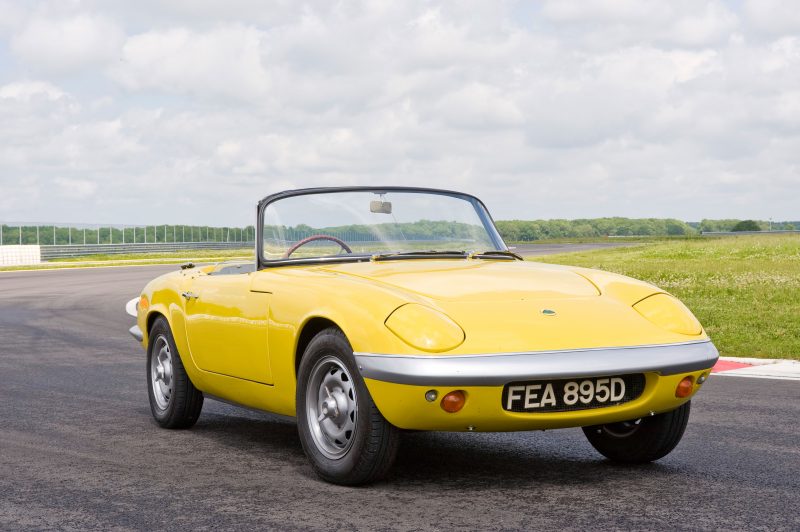
So while everything was engineered properly and installed to the very highest standards, the customer had to pay rather a lot of money for what was a fairly spartan sports car with little in the way of luxury. The £1,500 cheque you’d have had to write would have bought you a very nice full-size sports car that would have impressed the hell out of the neighbours. And if you were feeling flush, the Jaguar E-Type was only £750 more.
Oh, and if you could have found another £1,000, then you’d have had enough to be able to buy the average house, which means that a modern-day Elan would retail for £170,000, placing it neatly between a McLaren 650S and the 570S in price.
Like I said, the Lotus Elan was an expensive car.
The low-powered car developed over the years and went through several iterations: S1, S2, S3, S4 and Sprint and even a Plus 2 that had suitably diminutive rear seats. A fixed hardtop joined the convertible and owners could buy a DIY kit that enabled them to build their own car to save a few quid on the purchase price. Lotus also started offering a few optional extras to up the luxury quotient so you might find cars with electric windows and walnut veneer on the dashboard. Born in 1963, the Elan died in 1973.
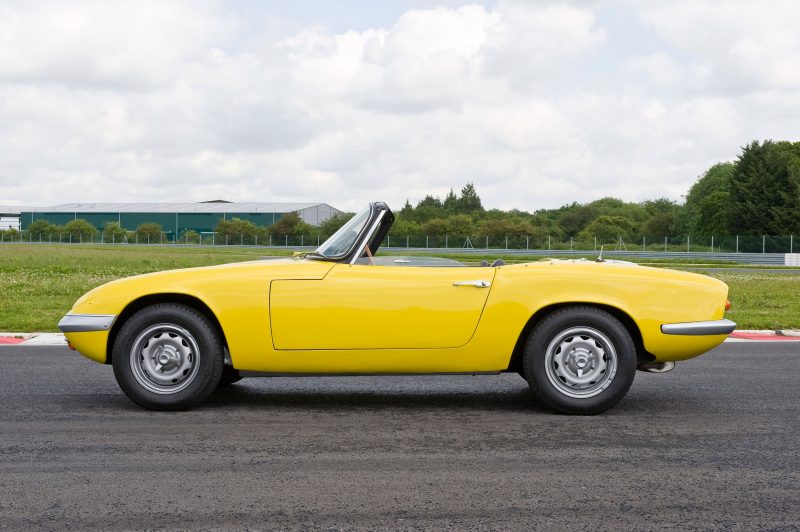
“Adding power makes you faster on the straights; subtracting weight makes you faster everywhere” Colin Chapman, founder, Lotus Cars
So, price aside, the Elan was a joyous little thing. Only just big enough to accommodate two people and their weekend luggage, the Lotus’ diminutive stature is only apparent when it’s viewed in the context of a modern car. The Mazda MX-5, famously modeled on the Elan, dwarfs the Lotus. It’s more than ten inches longer and ten inches wider and weighs 250kgs more. The Elan is really, really tiny.
It weighs so little because there is bugger all of anything including passive safety features but it flows along the road like nothing else. The absence of mass means that it changes direction instantly and grips like a champ – and when it does let go (and it will; a 155-section tyre can only give you so much grip) it is utterly predictable and catchable.
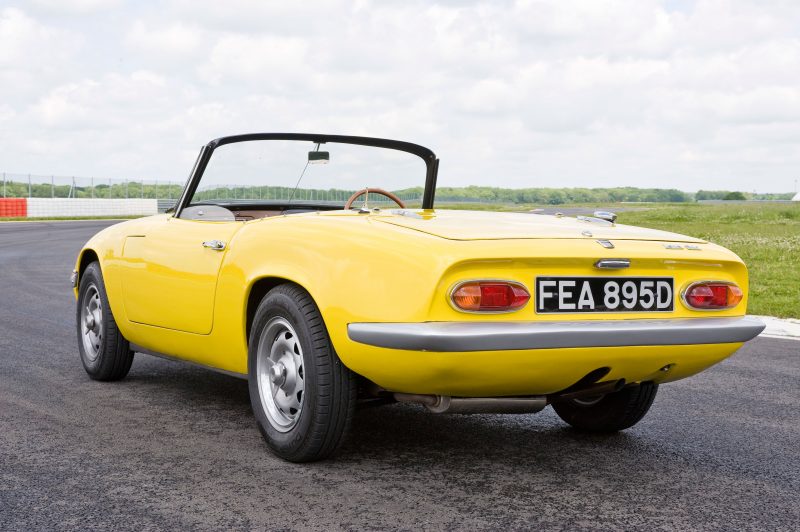
“Like mud-wrestling a nun” Richard Hammond
The Elan is communicative too. Modern, low profile tyres might look great and give an artificial instancy to their steering feel but when they let go they generally do so quickly and completely. An older tyre with a taller sidewall will deform more consistently and progressively as the cornering forces build, giving you oodles of feedback as it does so and while the limits will be a lot lower, they can be probed and explored with complete confidence (as long as you don’t think about how your bodywork would be extensively remodelled in a crash).
The 1557cc Lotus Twin-Cam engine is, of course, pretty much a heavily fettled Ford engine but it was the subject of continuous development over the years and ended its life with 126bhp thanks to bigger valves and careful tuning. It sounds lovely too and revs freely without any recourse to electronic trickery, relying on old-school engineering from men who smoked pipes and would have been baffled by the concept of male grooming products.
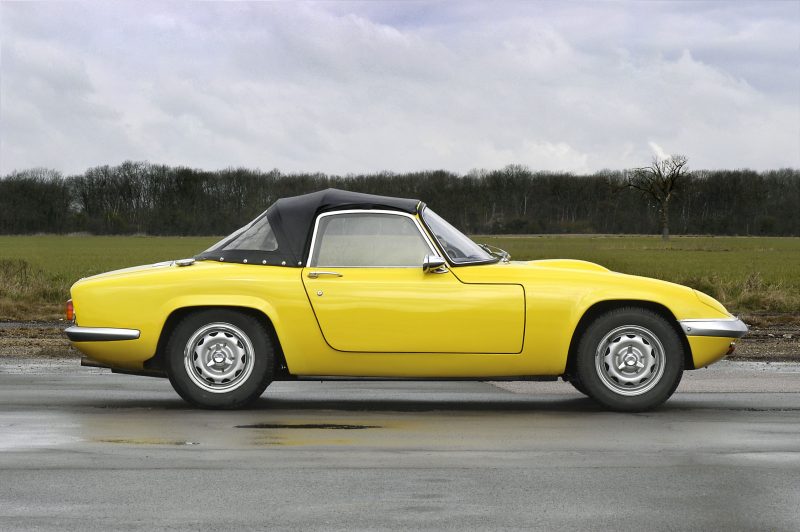
“Almost the perfect sports car” Jay Leno
My earlier analogy with the current McLaren car range was no accident. Gordon Murray, Formula One designer extraordinaire and the genius behind the world’s greatest car, said that the original Elan was his favourite car. (Coincidently, Peter Stevens, the man who drew the McLaren F1, also designed the second generation M100 Elan of the 1990s.)
So timeless was the Elan’s engineering and design that the original Mazda MX-5 was an almost carbon copy of it. Only fatter, heavier, slower, and less satisfying to drive.
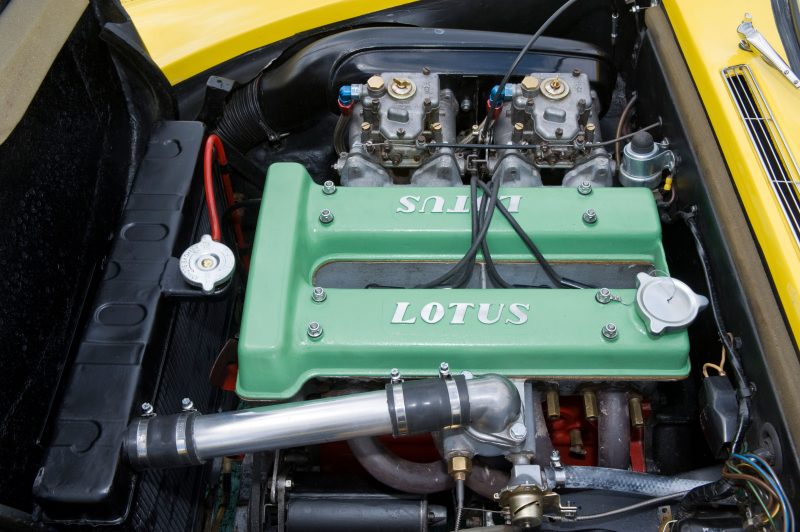
“Lots of Trouble, Usually Serious” Everyone who has ever owned one”
Buying an Elan is straightforward because everything is exposed and easily visible. So you can check for leaks and wear by pushing and pulling and prodding the usual places but they’re worth so much now that they tend to be looked after, so the easily replaced mechanical bits – and everything that is mechanical is easily replaced – will probably be in fine fettle.
The electrical system is straightforward too. The electrical pixies are wrangled via cables and soldered connectors rather than ECUs and sensors, so repairs should be a simple matter of re-soldering the appropriate connector.
However, this is a Lotus and trouble rolls in when you try to find a decent earth; the glassfibre body might not corrode but it isn’t an awful lot of use when you are trying to use it as a common ground. If you have electrical problems – and you will – you will need to find someone who knows what they’re doing and throw armfuls of cash at them until the problem (temporarily) goes away.
Other weak points include a glass fibre body that develops stress cracks as it flexes over the years. Small cracks can be ground out and filled but larger problems mean the affected area will need to be cut out and replaced. Again, this is not a DIY job, so you will need to find someone who knows what they’re doing and throw armfuls of cash at them until the problem (temporarily) goes away.
The Twin-Cam engine is reliable enough if it is maintained properly, but it’s a complex engine that needs careful assembly if it is to perform as well as it should, so you will need to find someone who knows what they’re doing and throw armfuls of cash at them until the problem (temporarily) goes away.
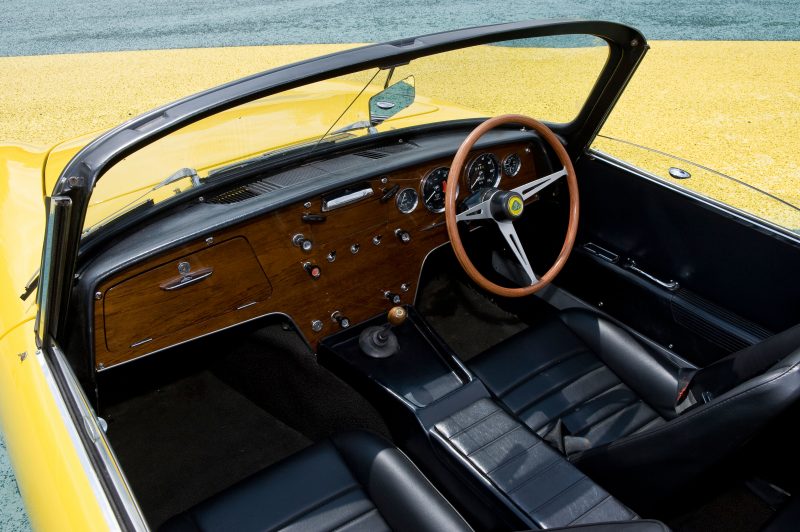
“Any car which holds together for a whole race is too heavy.” Colin Chapman, founder, Lotus Cars
As a racing company, Lotus built the cars to be just about strong enough and no more, so upgrades that rectify some of the weaknesses that can arise are accepted practice. One of the most common is the installation of a replacement chassis from Spyder Cars. It’s engineered to be stronger than the original chassis and customers can specify a direct replacement or a version that enables them to fit Spyder’s upgraded suspension or even a modern Ford Zetec engine.
Originality is valued on Planet Lotus but if you want a car that is as usable as possible then sympathetic upgrades won’t devalue your car one bit. I’d be tempted to keep the Lotus Twin-cam engine but wouldn’t hesitate to upgrade the suspension, chassis, brakes, and transmission to something that is stronger, more reliable, and works better: engineering has developed enormously in the past fifty years and the Elan can be made to be as reliable and easy to drive as a modern MX-5. The only difference is that the MX-5 will depreciate while the Elan will continue to appreciate.
“Rules are for the obedience of fools and interpretations of smart men.” Colin Chapman, founder, Lotus Cars
The usual rule is to let someone else pay for the restoration because you will never recoup all your costs if you decide to restore a basket case. However, an Elan is a special little car and the possibilities are almost endless. It is also, at heart, a relatively simple one. As a result, I quite fancy buying the worst box of parts I can find before ordering a Spyder chassis and starting from there.
I’d have years of fun building it and then decades of fun driving it. I’d know it inside out and would never have to throw armfuls of cash at a specialist until the problem (temporarily) goes away.
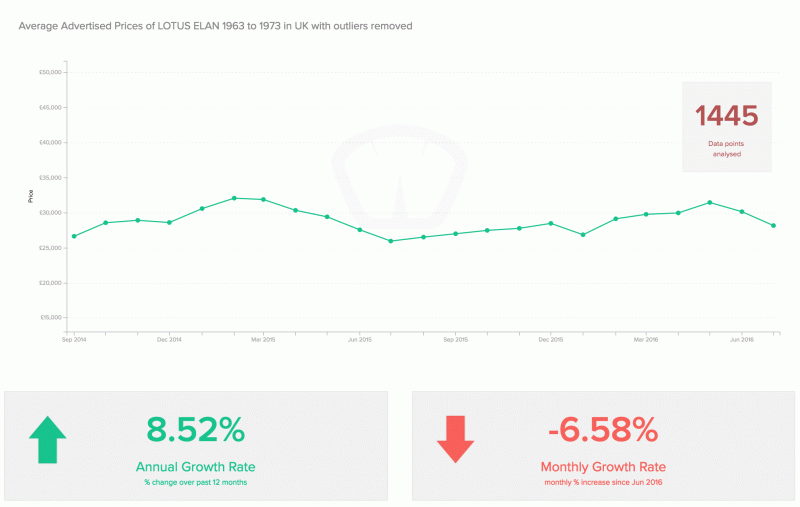
For those with more money and a greater grasp of reality, our price trends (search the trend of any make or model here) prices start at £15,000 for something that’s usable but a bit rough around the edges all the way to £35,000 and rising for a good ‘un. Of course, competition history, fabulous provenance and/or originality could increase that by a factor of ten.
Like I said: box of bits.
Carlton Boyce